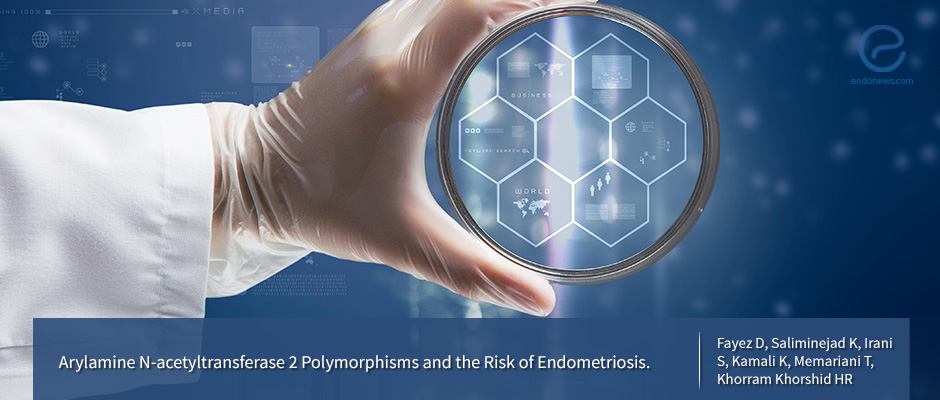Molecular Susceptibility to Endometriosis
Sep 12, 2018
This study looked at various polymorphisms of the human arylamine N-acetyltransferase 2 (NAT2) gene to better understand its link with endometriosis risk.
Key Points
Highlights:
- The researchers looked at the relationship between Human arylamine N-acetyltransferase 2 (NAT2) gene polymorphisms and endometriosis susceptibility using a study population made up of Iranian women.
Importance:
- Research has yet to reach a consensus on whether or not NAT2 can be considered a susceptibility factor with regards to endometriosis. If researchers can agree upon the role of the gene, they can move forward with therapies and treatments that target this gene if it is, in fact, a risk factor for the disease in question.
What’s done here?
- Participants:
- 141 Iranian women with endometriosis were compared to 158 age-matched Iranian women without endometriosis
- Biological samples taken from each participant include peripheral blood samples.
- Genotype and phenotype determination after DNA extraction from each participant. Four polymorphisms (C481T, A803G, G857Aand G590A) were genotyped by PCR-RFLP technique.
- The NAT2PRED Web server was used to predict the phenotypes of the NAT2 acetylator, and the data was subjected to statistical analyses.
Key results:
- The genotype associated with the G590A polymorphism was found to be decreased in the women with endometriosis compared to the women without, leading the researchers to believe that this particular polymorphism may play a role in increased endometriosis susceptibility.
- The women with endometriosis had fewer 590A alleles than their counterparts without endometriosis, suggesting the aforementioned allele has a protective function in endometriosis progression.
- Haplotype analysis highlighted that NAT2 haplotype 481C, 803A, 590A, 587A correlate with increased risk of endometriosis.
Limitations of the study:
- This study focused on women from one country. This limits the global applicability of the study.
Lay Summary
Fayez et al., a group of researchers from various institutions in Iran, recently published a paper in the Avicenna Journal of Medical Biotechnology titled “Arylamine N-acetyltransferase 2 Polymorphisms and the Risk of Endometriosis.” This study focused on the relationship between the human arylamine N-acetyltransferase 2 (NAT2) gene polymorphisms and the risk of endometriosis.
The participants of the study included 141 Iranian women who have endometriosis and 158 Iranian women without endometriosis who were age-matched to the experimental group. All participants provided a peripheral blood sample. This sample underwent the salting out the procedure in order to extract DNA. PCR-RLFP was used for genotyping the 4 polymorphisms of interest, namely C481T, A803G, G857A, and G590A. The NAT2PRED Web server was used to predict the phenotypes of the NAT2 acetylator. The data from the experimental process was subject to statistical analysis.
There was one genotype, namely 590 GA, that was lower in the endometriosis group compared to the control group. This leads researchers to believe that the aforementioned polymorphism plays a role in endometriosis risk. Researchers also believe that the 590A allele plays a protective function in endometriosis development because it was also found to be lower in the endometriosis group. The results of the study also highlighted a haplotype combination that was found to increase the risk of endometriosis. This combination consists of NAT2 481C, 803A, 590A, 587A.
Research Source: https://www.ncbi.nlm.nih.gov/pubmed/30090210
arylamine N-acetyltransferase 2 NAT2 polymorphisms PCR-RLFP

